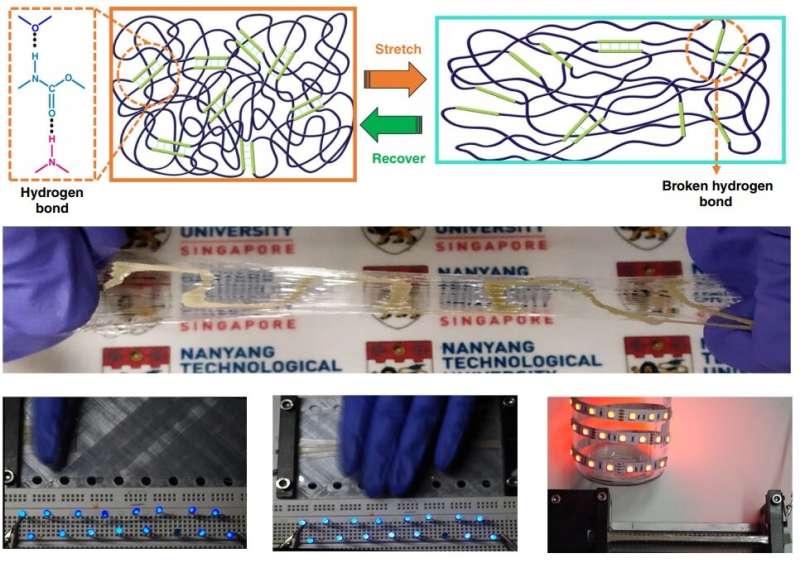June 24, 2019 feature
Nanogenerator's 2500% stretchability sets new record

By stretching like a rubber band to more than 25 times its original length, a new nanogenerator has set a new stretchability record. The triboelectric nanogenerator's 2500% stretchability represents a significant increase over the previous best values of approximately 1000%. In addition, the device is the first triboelectric nanogenerator that is completely fabricated with 3D printing.
The researchers, including Kaushik Parida, Gurunathan Thangavel, and Pooi See Lee at Nanyang Technology University and the Singapore-HUJ Alliance for Research and Enterprise (SHARE), have published their results on the highly stretchable, all-3D-printed triboelectric nanogenerator in a recent issue of Nature Communications.
Triboelectric nanogenerators (TENGs) harvest energy from ambient mechanical movements, such as finger tapping, and have potential applications as wearable electronic devices. Making TENGs stretchable is difficult because the two main layers—the triboelectric layer and the conductor—usually have different elastic properties, so they tend to come apart after repeated stretching.
To address this issue, in the new study the researchers used the same elastic material (polyurethane acrylate, or PUA) as the basis for both the triboelectric layer and the polymer matrix for the conductor. To increase the conductivity, the researchers also added liquid metal particles and silver flakes to the conductor. When the nanogenerator undergoes extreme stretching, the hydrogen bonds in the PUA reversibly break and reform to support the desired stretchability. At the same time, the liquid metal particle shells break and release conductive liquid metal to provide a connection between the separated silver flakes in the PUA matrix, allowing the device to maintain a high conductivity.
The researchers also demonstrated that the nanogenerator can be cut apart into separate pieces, and yet still almost completely regain its original performance after a healing process consisting of 24 hours of heating.
The nanogenerator is also the first in which all components were printed using a 3D printer. Previously, only the triboelectric layer has been 3D-printed, since most elastomeric materials have limited stretchability when fabricated with 3D printing.
With its high stretchability and conductivity, as well as the ease of fabrication with 3D printing, the nanogenerator has potential applications as an energy harvester for small portable self-powered electronics, including LEDs and sensors.
More information: Kaushik Parida et al. "Extremely stretchable and self-healing conductor based on thermoplastic elastomer for all-three-dimensional printed triboelectric nanogenerator." Nature Communications, volume 10, Article number: 2158 (2019)
Journal information: Nature Communications
© 2019 Science X Network





















